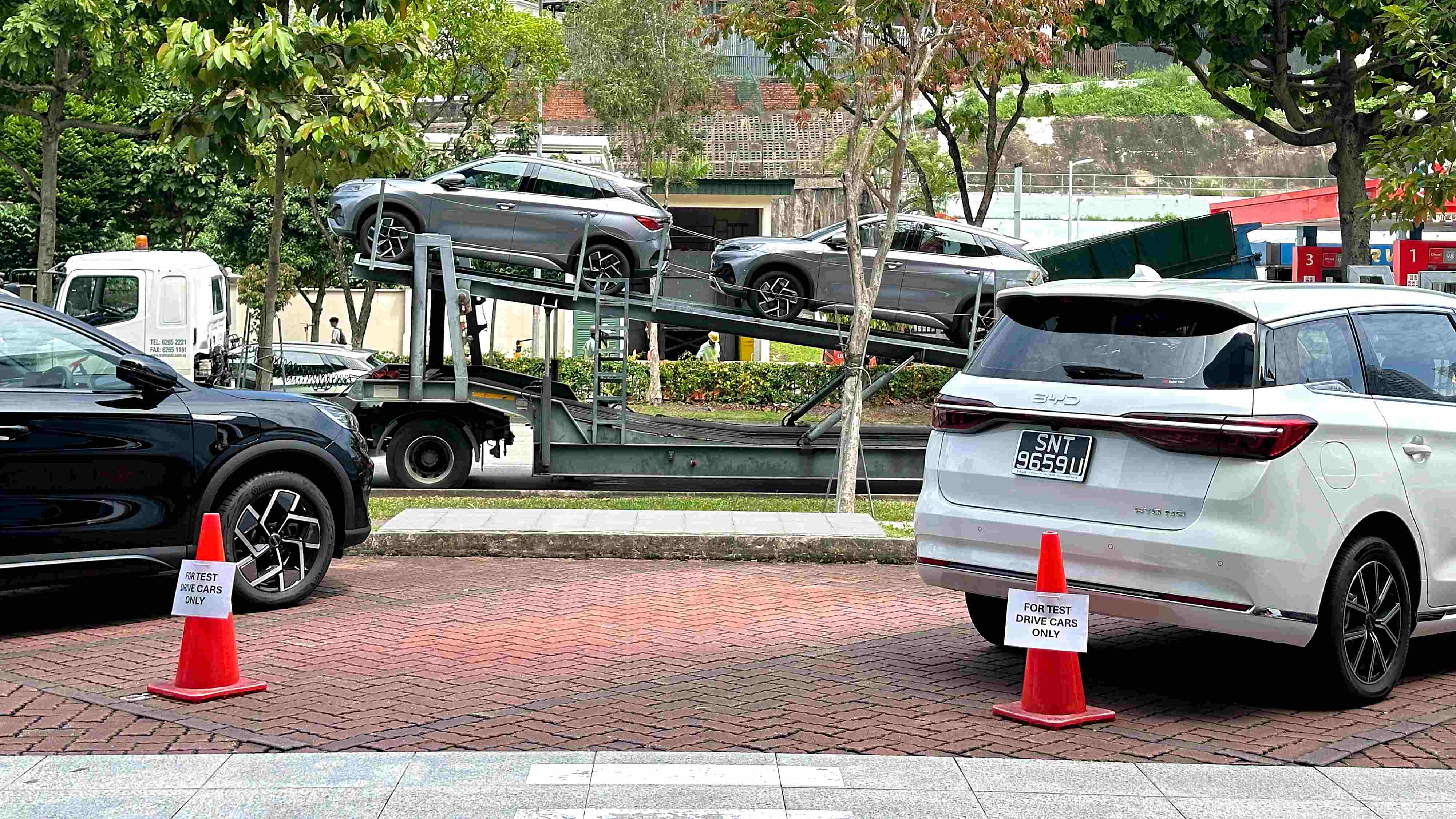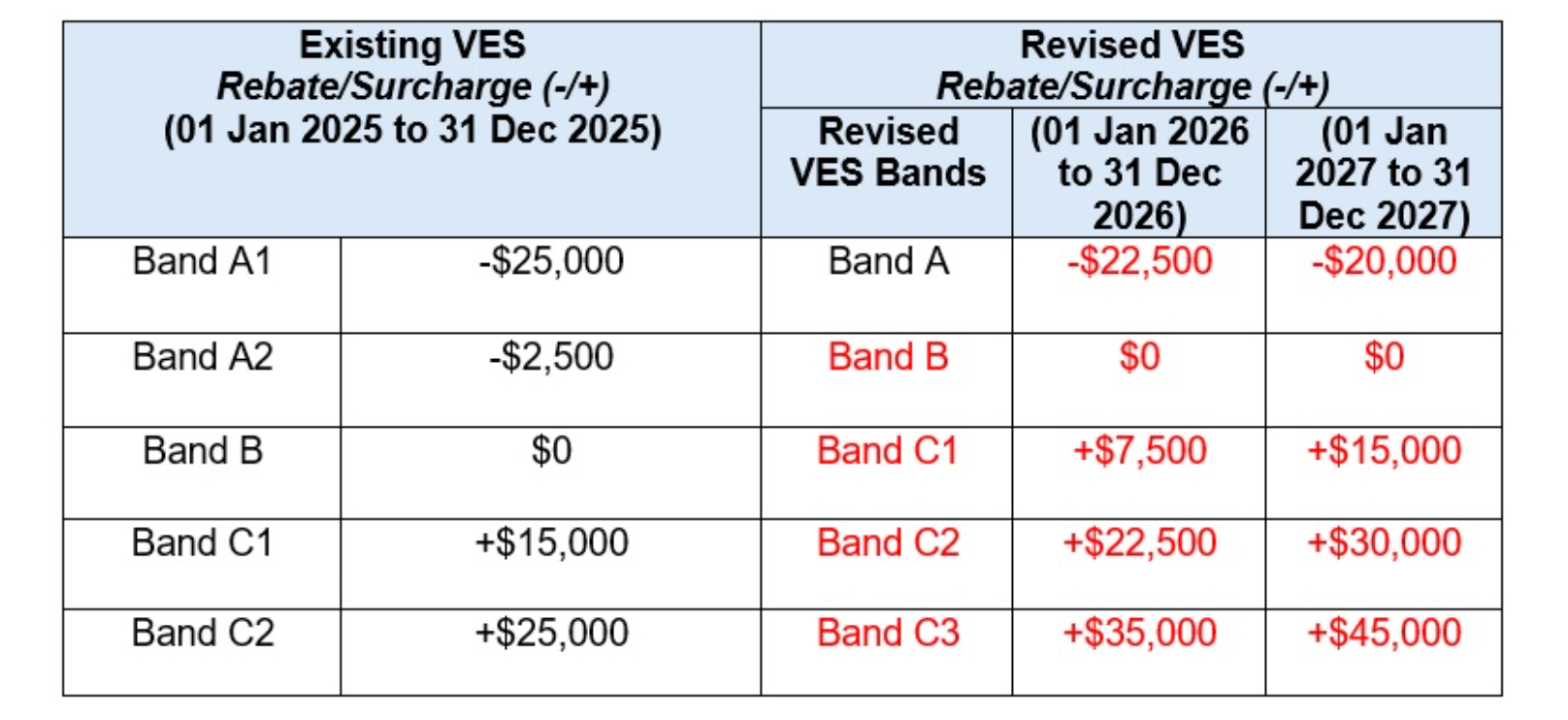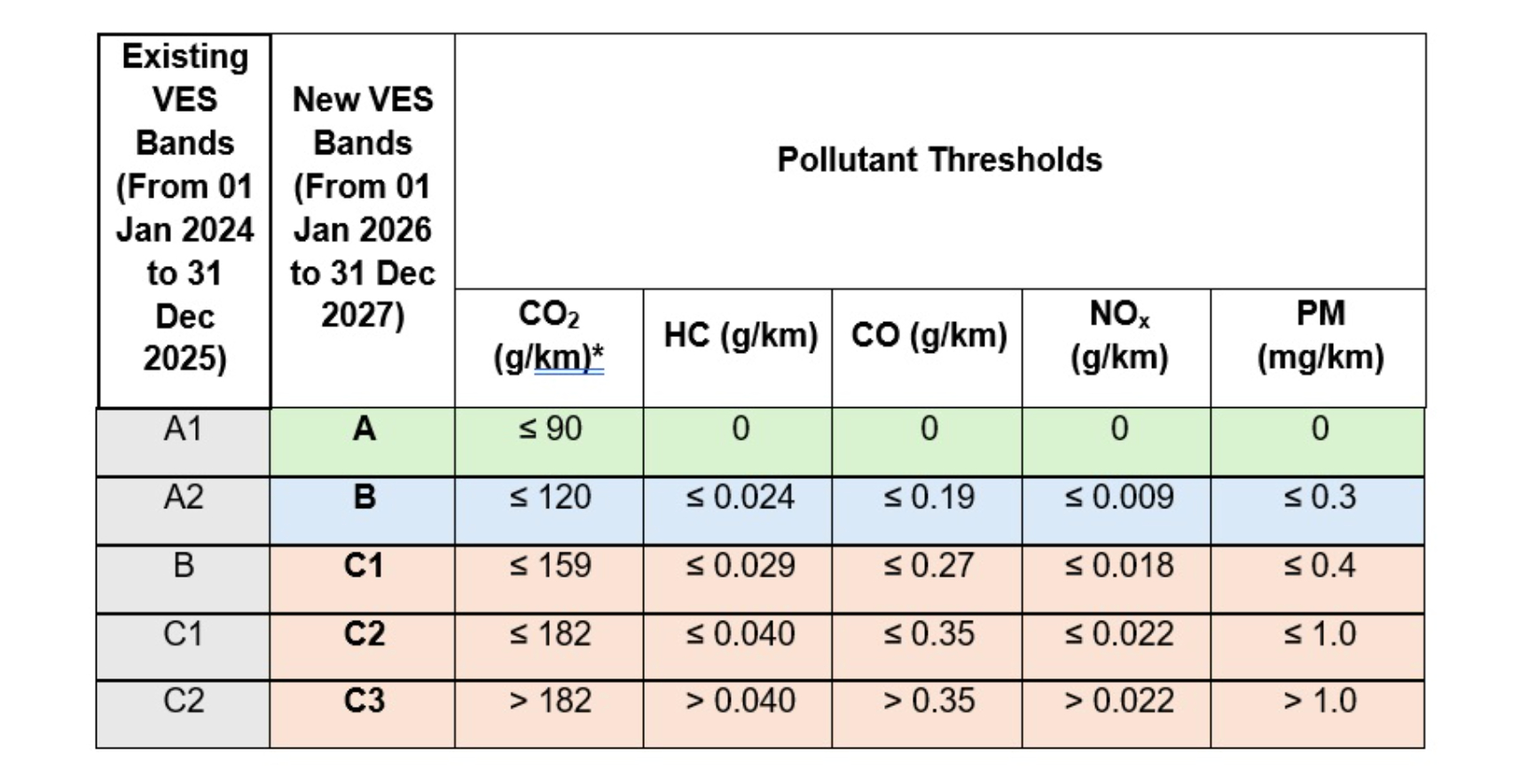LTA revises VES to incentivise electric vehicles only and progressively increase the penalties for the more pollutive petrol-powered new cars

Land Transport Authority (LTA) and National Environment Agency (NEA) have jointly announced major changes to the VES (Vehicular Emissions Scheme) and EEAI (EV Early Adoption Incentive), which will take effect from the 1st of January 2026.
The VES, which was scheduled to reach the end of the road on the last day of December 2025, will be extended for another two years - from 1 January 2026 till 31 December 2027.
At the same time, the VES bands and their associated rebates/surcharges will be changed in favour of fully-electric vehicles, at the expense of conventional car propulsion types which include petrol-electric hybrids such as Toyota Prius. More-pollutive vehicles will also be slapped with higher VES surcharges in 2026 and even higher VES surcharges in 2027.
The current, relatively “clean” VES bands of A1 and A2 will be merged into a single band A, with the vehicle tax (ARF) rebate reduced from today’s $25,000 to $22,500 for next year and then to exactly $20,000 for the year after (2027).
The almost emission-free performance requirement (no more than 90 grams of carbon dioxide emitted per kilometre driven) under the new VES band A means that only full EVs powered by pure battery-electricity will receive the applicable rebates from next year onwards.
Anything with an internal combustion engine, whether it’s a petrol-electric hybrid or an EV-like plug-in hybrid electric vehicle or a clever range-extender quasi-EV, would not qualify for the revised VES band A.
New cars which qualify for VES band A2 and its $2,500 rebate this year will be pushed to the new VES band B next year. It is also known as the neutral band because it doesn’t give any rebate nor levy any surcharge.
Furthermore, the five-pollutant thresholds will be made stricter for the neutral VES band, which will adopt the same matrix (of which the worst/highest pollutant output determines the vehicle’s VES banding) as today’s VES band A2 with effect from the first day of 2026.
The surchargeable VES bands of C1 and C2 which apply to cars registered in 2025 will become progressively more punitive in 2026 and 2027.
From 1 January to 31 December 2026, the old VES neutral band B with its original pollutant thresholds will be reclassified as VES band C1, which entails a $7,500 VES penalty. The old VES band C1 with its original pollutant thresholds will be reclassified as VES band C2, which entails a $22,500 VES penalty.
There will also be a newly-created VES band C3 which applies to vehicles whose worst pollutant threshold exceeds that of today’s VES band C2. The VES band C3 penalty will be a prohibitive $35,000.
 The adjustments to Vehicular Emissions Scheme (VES) from 2026 to 2027.
The adjustments to Vehicular Emissions Scheme (VES) from 2026 to 2027.
From 1 January to 31 December 2027, the VES band C3 surcharge will be raised to $45,000; while the VES band C2 surcharge will go up from $22,500 to $30,000 and the VES band C1 surcharge will be doubled from $7,500 to $15,000.
As for the EEAI (EV Early Adoption Incentive) specific to electric vehicles, it will continue to be offered till the end of 2026, but with the subsidy halved from the current $15,000 to $7,500. The scheme will stop when 31 December 2026 goes past midnight into the new year 2027.
The LTA-NEA joint news release closed with a predictive “We expect a short-term increase in COE prices” and also encouraged potential car buyers “to be prudent in bidding for COEs.”
The ominous prediction by the authorities about COE premiums increasing is reflected in the sentiments of the senior motor traders whom Motorist asked about the upcoming revisions to VES and EEAI.
 The pollutant thresholds under Vehicular Emissions Scheme (VES).
The pollutant thresholds under Vehicular Emissions Scheme (VES).
Ernest Tan, deputy CEO of Vincar Group which represents Aion, GAC and Proton in Singapore, said: “This shows that the Government is committing to EVs, but in the short term this will drive COE prices up.”
Nicholas Wong, CEO of Kah Motor Honda, said: “The short-term impact on COE prices will be very significant, given the major shift of VES banding. Already, the COE situation is very heated up. To mitigate the impact, the authorities should look into increasing supply of COE, especially towards the end of the year, as everyone is rushing to beat the scheme given the negative impact on some models. Hopefully, they can throw in some more COE quota to mitigate the short-term squeeze to beat the clock.”
Corinne Chua, managing director of Volvo Car Singapore, told Motorist: “Cat A has already reached an all-time high at close to $108k. I can’t imagine it going to $120k. My biggest fear is COE reaching a new all-time high - for example, Cat A at $115k and Cat B going beyond $130k again.”
Ng Choon Wee, commercial director of Komoco Motors Hyundai, said: “This will surely push COE higher from now till end of the year. The $10k reduction of incentives is 25 percent of the total incentives for EVs. With this reduction for next year, COE will surely increase by more than $10k from now. But the promise to gradually increase COE supply may help to offset the increase of premium this year.”
Mr Ng also shared with Motorist: “Hybrids also got penalised, despite being greener. My Avante and Kona hybrids are in VES band A2 now, but going to band B next year, Tucson hybrid and Santa Fe hybrid moving from band B to C1. So you need to be greener than green.”
It’s not all doom and gloom, though.
Anthony Teo, managing director of market leader Vantage Automobile which has been doing a roaring business with its BYD and DENZA electric cars, told Motorist: “With this latest announcement, I think it is actually helping people to quickly adapt to the EVs. There’ll be people rushing in, especially those who are waiting to change their car, because next year the EEAI and VES are gonna drop. In the short term, people will come in to want to buy and switch to EV, so as to take the full benefit of the $40,000 now, including the EEAI plus the VES.”
Mr Teo added on a positive note: “I think that’s the right direction the Government is pushing for EV adoption.”
Read More: 5 myths about EVs - busted!
Super App for
Vehicle Owners
Download the Motorist App now. Designed by drivers for drivers, this all-in-one app lets you receive the latest traffic updates, gives you access to live traffic cameras, and helps you manage LTA and vehicle matters
Did you know we have a Motorist Telegram Channel? Created exclusively for drivers and car owners in Singapore, you can get instant info about our latest promotions, articles, tips & hacks, or simply chat with the Motorist Team and fellow drivers.

16 days ago
"Null's Brawl is a special version of Brawl Stars where everything is unlocked from the start. You can enjoy all the brawlers, skins, and modes without waiting. This private server offers a fun, fast, and completely free experience for passionate fans of the game." Null's Brawl
about 1 month ago
Experience Nulls Brawl with unlimited gems and all characters unlocked. Participate in seasonal events, customize your team, and enjoy exclusive skins. Dynamic arenas and competitive gameplay ensure plenty of excitement. Nulls Brawl
about 1 month ago
about 1 month ago
Experience unlimited gems, gold, and brawlers with Nulls Brawl. Enjoy real-time multiplayer battles and explore game modes like Showdown, Heist, and Brawl Ball freely.
about 1 month ago